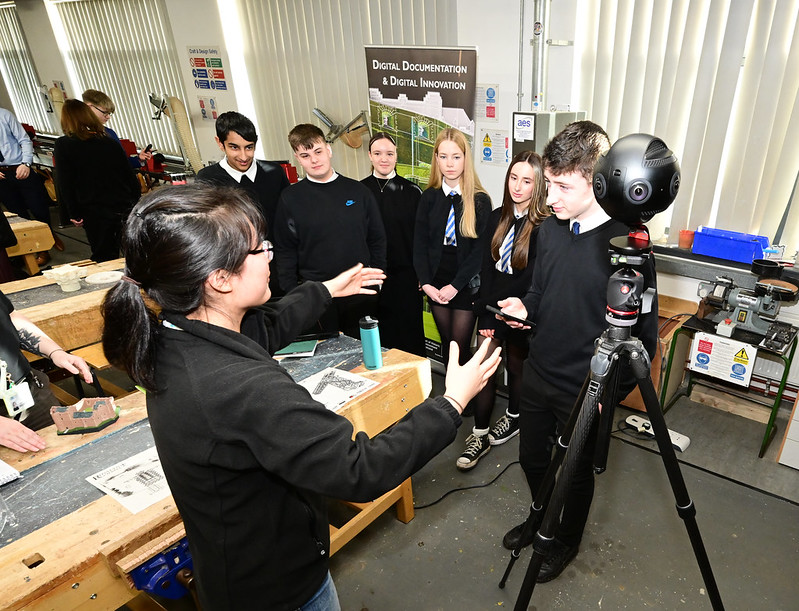
Around 80 pupils from Larbert and St Mungo’s High Schools are learning how new technology is preserving local historical heritage this week (19 February).
As part of the Bruce Obelisk restoration project, pupils have been working with experts involved in the restoration of the Obelisk as well as technical teams from Historical Environment Scotland in a series of workshops.
The workshops feature four areas of work where pupils will get hands-on with various tools and technology:
- Making patterns for ironwork
- Ironwork restoration and decoration
- Using 3D imaging and printing, and augmented and virtual reality in historic conservation
- Using thermal imagery to identify heat loss
At the end of the workshops, pupils will also have a chance to hear about exploring a career in construction.
Councillor Iain Sinclair, Falkirk Council’s spokesperson for Education said: “Pupils will get first-hand experience how special skills and new technology can have a big impact on preserving and restoring our built heritage.
“They will be working with some of the actual team who are carrying out the Bruce Obelisk work currently and when it is restored later this year, we are confident that many of the young people will have a greater understanding of what has been involved.”
Ali Davey, Traditional Materials Project Manager at Historic Environment Scotland, said: “Through these workshops, not only are we restoring the Bruce Obelisk, we're utilising this project as an opportunity to engage with local communities and showcase the importance of skills in conservation.
“We're thrilled to be able to introduce pupils to the variety of ways in which we work, involving a range of new technologies to help conserve a key aspect of our national heritage."
The Bruce Obelisk is an important piece of local history commemorating James Bruce of Kinnaird, a descendant of the most famous King of Scots, Robert the Bruce.
Made by Carron Iron Works, the Obelisk is a cast-iron monument commissioned in 1785 by James Bruce himself in memory of his wife Mary and stands as a testament to Falkirk’s craftsmanship and heritage during the Industrial Revolution.
After being temporarily moved in 1993, the Obelisk has endured the test of time and the elements but was deteriorating and was sent for repair in 2023.
Thanks to local community efforts and funding from Historical Environment Scotland, Avondale Environmental, part of the NPL Group, through the Scottish Landfill Communities Fund and Lottery-funded Inner Forth Landscape Initiative Management and Maintenance Fund the Obelisk is currently being carefully restored and is expected to be back on site in Larbert Old Church in late Spring of 2024.
Local Community Groups and Institutions including Falkirk Made Friends, Falkirk Preceptory and Priory, Falkirk Local History Society, Communities Along the Carron and Larbert Old Parish Church have also supported the project. In addition, Lord Thurlow, a descendant of James Bruce, to whose family the Obelisk was dedicated, has also confirmed his family’s support for the project.
The restoration project is being led by Falkirk Council and managed on-site by consultants WSP and the intricate process of rejuvenating the Obelisk is being led by iron restoration specialists Lost Art Limited in Wigan.